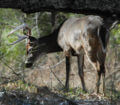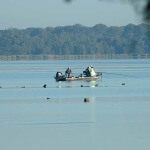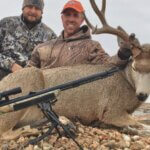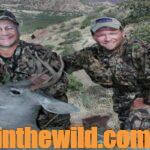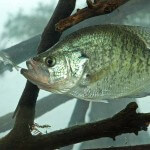Editor’s Note: Thousands of acres of land throughout the country home trophy bucks. By talking to a rural postman, you may pinpoint places where big deer live and be able to talk to the landowner about hunting there. Also, don’t neglect to check out wide open spaces for the deer living there.
 The Rural Mailman:
The Rural Mailman:
In many rural sections of the country, the mailman knows everyone on his route. Because he travels his route in the mornings delivering the mail, he’ll frequently spot big bucks crossing the road. Also, he’ll usually know who owns the land where he has seen a buck and the possibilities for hunting that land. By making friends with the local mailman, I’ve found several big bucks in my county. Many of these bucks either have remained close to a homeplace or lived in very-dense cover for a large part of hunting season. Often the mailman will act as a go-between to help me obtain permission to hunt big bucks on private property, because to bag a trophy buck, you first have to know a trophy buck exists on the property you want to hunt.
The mailman once told me in the rural area where I lived at that time that, “Miss Ida Mae Jones has some very-nice bucks on her place but doesn’t let anyone hunt them. However, if you want to hunt the crows eating up her garden, she’ll welcome you with open arms and have homemade pie and coffee for each morning you hunt.” The next morning I went to see Miss Ida Mae Jones and told her I’d heard she had some crows she wouldn’t mind me shooting. “Mind!” Miss Ida Mae said with a big smile on her face. “I’d almost pay someone to shoot those crows. You’re more than welcome.”
Once a week for six weeks, I went to Miss Ida Mae’s house and shot the crows in her garden. I also noticed her property had a large concentration of crows in one of her cornfields, about 1/2-mile from the garden. When I mentioned my observation to her, she told me, “John, you can go to any property I own and shoot crows. But I feel guilty about not doing anything for you. What do you need?” I mentioned that some of her neighbors allowed deer hunting on their lands and asked if she would put in a good word for me with her neighbors. Miss Ida Mae replied she would help me.
 Throughout the rest of that summer, I shot crows at least one day a week on some portion of Miss Ida Mae’s 8,000 acres. Then when September arrived, she spotted me and hollered that she wanted me to come back to the house when I finished shooting. “I’ve just cooked a blackberry pie and made some iced tea.” After my hunt, I returned to Miss Ida Mae’s. She explained she hadn’t asked any of her neighbors if I could deer hunt on their property. “I’ve decided to let you hunt here, if you’ll bring your shotgun and tell anyone who asks that you’re just hunting crows on my place. Also when you take a deer, promise me you won’t tell anyone where you’ve hunted.” We struck the bargain. I took several bucks at Miss Ida Mae’s for a number of years. Too often, we all think first of what we want when we consider deer hunting and what the landowner wants secondary.
Throughout the rest of that summer, I shot crows at least one day a week on some portion of Miss Ida Mae’s 8,000 acres. Then when September arrived, she spotted me and hollered that she wanted me to come back to the house when I finished shooting. “I’ve just cooked a blackberry pie and made some iced tea.” After my hunt, I returned to Miss Ida Mae’s. She explained she hadn’t asked any of her neighbors if I could deer hunt on their property. “I’ve decided to let you hunt here, if you’ll bring your shotgun and tell anyone who asks that you’re just hunting crows on my place. Also when you take a deer, promise me you won’t tell anyone where you’ve hunted.” We struck the bargain. I took several bucks at Miss Ida Mae’s for a number of years. Too often, we all think first of what we want when we consider deer hunting and what the landowner wants secondary.
Wide-Open Space Bucks
An overlooked region for finding trophy bucks includes areas no other hunter asks to hunt, like a cattle ranch. Most sportsmen believe the more woods you have to hunt, the greater the odds will favor your taking a trophy buck. However, older-age-class bucks usually confine their movement to very small patches of woods in daylight hours during hunting season.
Once I found a productive place to take a nice buck on a cattle farm. When I asked Mr. Powell, the farm owner I had met a year earlier, if I could scout his farm and see if I could locate a buck to hunt, Mr. Powell slid his glasses further down his nose. He looked over the top of his frames and said, “John, can you tell the difference between a cow track and a deer track?” “Yes, sir,” I answered. “Well, I’ve seen a lot of cow tracks on this place, but I don’t believe I’ve ever seen a deer track,” Powell told me. “Even if you find a deer, you won’t get close enough to him to take a shot before he sees you.” I laughed and said, “You may be right, Mr. Powell, but I’d like to slip around and see if I can find a buck on your place.”
 Powell mentioned that no-other hunter ever had asked permission before to hunt his land. Although he felt sure I wouldn’t find a deer track or a deer, he would give me permission to hunt. After two days of scouting, I located a big deer scrape along a small woodlot on the edge of a pasture and a large honeysuckle thicket on the pasture’s back side. The 20-yard-wide woodlot ran along the fence. An open pasture extended for 300 yards on either side of the woodlot. Although the briar thicket measured less than 30 yards in circumference, two well-defined deer trails ran into and out of the briars. On the entire farm, I only could spot deer activity at these two sites.
Powell mentioned that no-other hunter ever had asked permission before to hunt his land. Although he felt sure I wouldn’t find a deer track or a deer, he would give me permission to hunt. After two days of scouting, I located a big deer scrape along a small woodlot on the edge of a pasture and a large honeysuckle thicket on the pasture’s back side. The 20-yard-wide woodlot ran along the fence. An open pasture extended for 300 yards on either side of the woodlot. Although the briar thicket measured less than 30 yards in circumference, two well-defined deer trails ran into and out of the briars. On the entire farm, I only could spot deer activity at these two sites.
I decided the buck used the woodlot to travel back and forth from the pasture. I assumed the buck would hold in the woods until just after dark and then move into the pasture to feed and breed. Then he would return through the woodlot to the thicket to bed down just at daylight. I set up a tree stand at the thicket’s edge. On the following weekend, I climbed into my stand an hour before daylight. Just as the sun rose, I spotted a huge 8-point buck, heading straight for the thicket. With the deer 20-yards from me, I took the shot. That afternoon I surprised the landowner with the buck.
“That buck had to come off someone else’s property, because I’ve never seen him on my land,” Powell exclaimed. “How did you find him?” “I pinpointed an area where I thought a buck had to walk, set-up a tree stand and waited until he came along,” I replied.
Many times, regions where big bucks hold will go completely unnoticed by the landowner and any hunter who looks at the property. In many instances, I’ve learned that when hunting trophy bucks, the fewer places that can hold a buck means the easier time you’ll have finding him and the less likely someone else has hunted there before you.
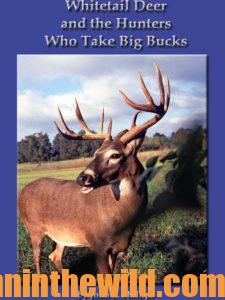
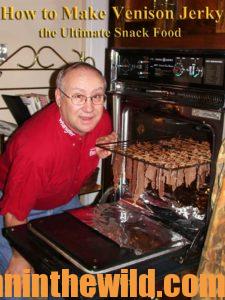 To learn more about hunting deer, go to John E. Phillips’s book, “Whitetail Deer and the Hunters Who Take Big Bucks” at https://www.amazon.com/Whitetail-Deer-Hunters-Take-Bucks-ebook/dp/B01KU0O1KY, available in Kindle and print versions. To receive your free book on “How to Make Venison Jerky,” go to https://www.emailmeform.com/builder/form/Ece3UZVcOo52cKPJcL
To learn more about hunting deer, go to John E. Phillips’s book, “Whitetail Deer and the Hunters Who Take Big Bucks” at https://www.amazon.com/Whitetail-Deer-Hunters-Take-Bucks-ebook/dp/B01KU0O1KY, available in Kindle and print versions. To receive your free book on “How to Make Venison Jerky,” go to https://www.emailmeform.com/builder/form/Ece3UZVcOo52cKPJcL
Tomorrow: Harvest Buck Deer in the Pines

